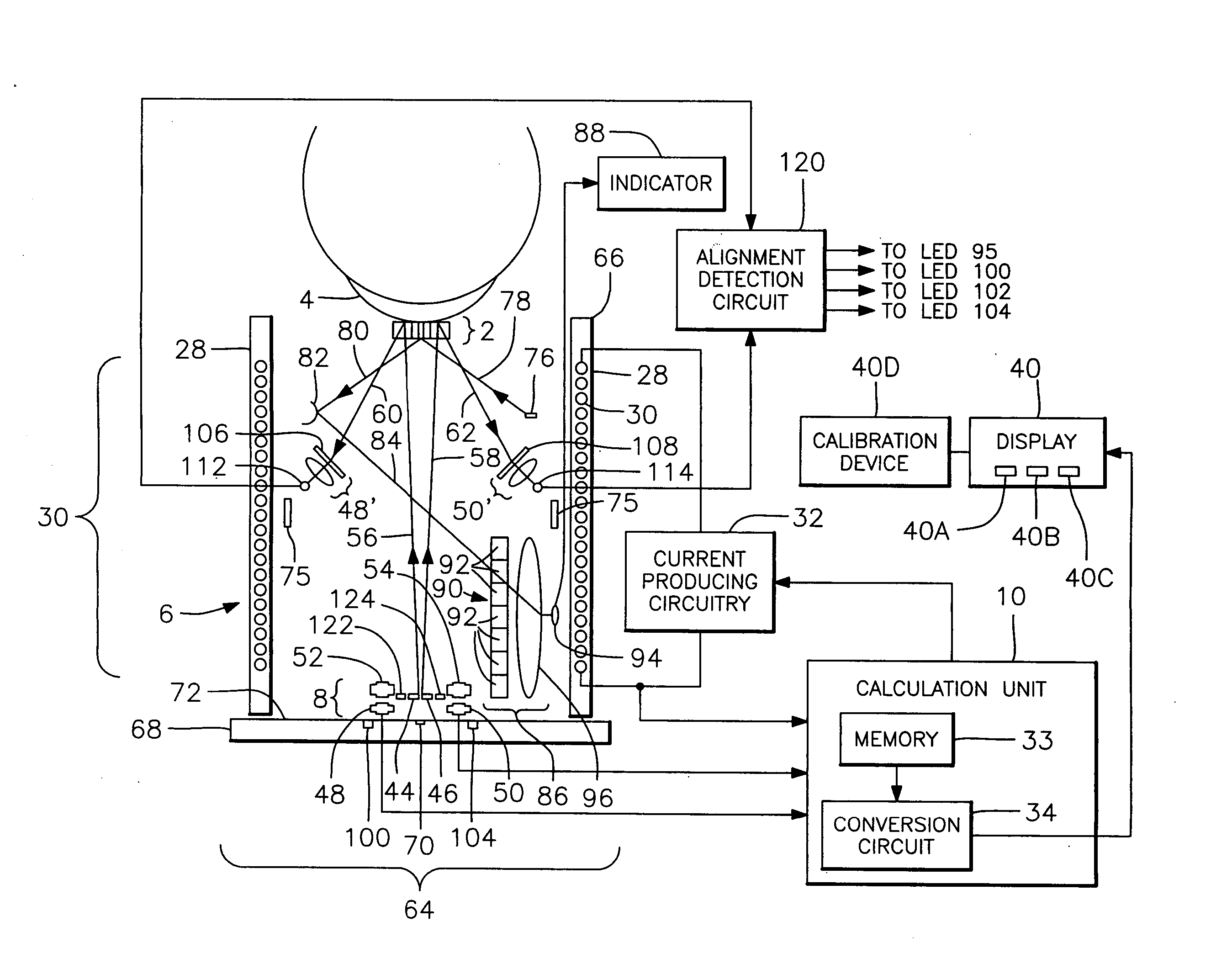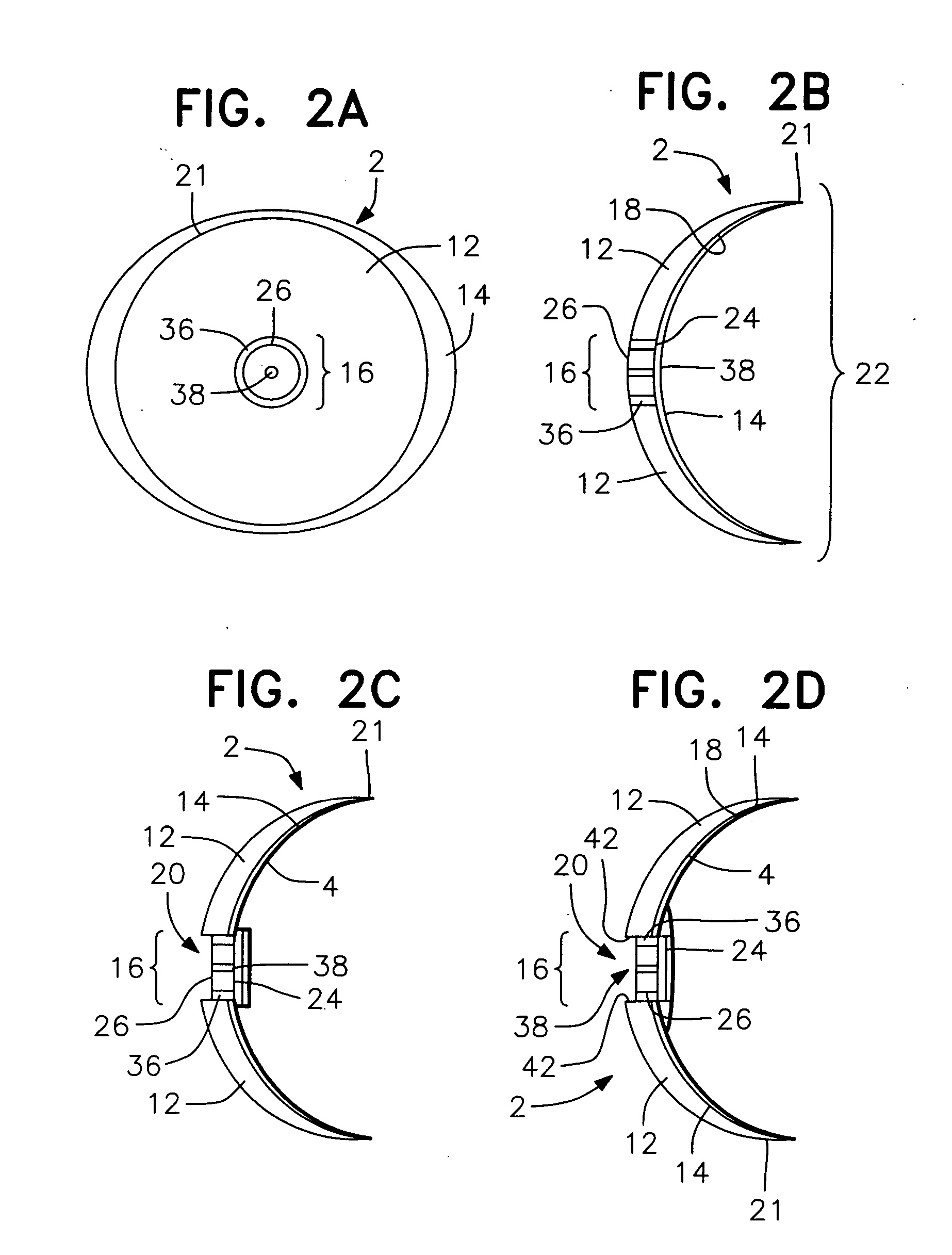Contact lens for collecting tears and detecting analytes for determining health status, ovulation detection, and diabetes screening
a technology of contact lens and analytes, which is applied in the field of contact lens for collecting tears and detecting analytes for determining health status, ovulation detection, and diabetes screening, can solve the problems of device ocular rigidity cannot affect the applanation tonography, and achieves the effects of thick lining, easy bleed during chewing, and long wear and tear
- Summary
- Abstract
- Description
- Claims
- Application Information
AI Technical Summary
Benefits of technology
Problems solved by technology
Method used
Image
Examples
Embodiment Construction
Applanation
[0576] A preferred embodiment of the present invention will now be described with reference to the drawings. According to the preferred embodiment illustrated in FIG. 1, a system is provided for measuring intraocular pressure by applanation. The system includes a contact device 2 for placement in contact with the cornea 4, and an actuation apparatus 6 for actuating the contact device 2 so that a portion thereof projects inwardly against the cornea 4 to provide a predetermined amount of applanation. The system further includes a detecting arrangement 8 for detecting when the predetermined amount of applanation of the cornea 4 has been achieved and a calculation unit 10 responsive to the detecting arrangement 8 for determining intraocular pressure based on the amount of force the contact device 2 must apply against the cornea 4 in order to achieve the predetermined amount of applanation.
[0577] The contact device 2 illustrated in FIG. 1 has an exaggerated thickness to more...
PUM
| Property | Measurement | Unit |
|---|---|---|
| thickness | aaaaa | aaaaa |
| fluorescent | aaaaa | aaaaa |
| surface charges | aaaaa | aaaaa |
Abstract
Description
Claims
Application Information
 Login to View More
Login to View More - R&D
- Intellectual Property
- Life Sciences
- Materials
- Tech Scout
- Unparalleled Data Quality
- Higher Quality Content
- 60% Fewer Hallucinations
Browse by: Latest US Patents, China's latest patents, Technical Efficacy Thesaurus, Application Domain, Technology Topic, Popular Technical Reports.
© 2025 PatSnap. All rights reserved.Legal|Privacy policy|Modern Slavery Act Transparency Statement|Sitemap|About US| Contact US: help@patsnap.com



